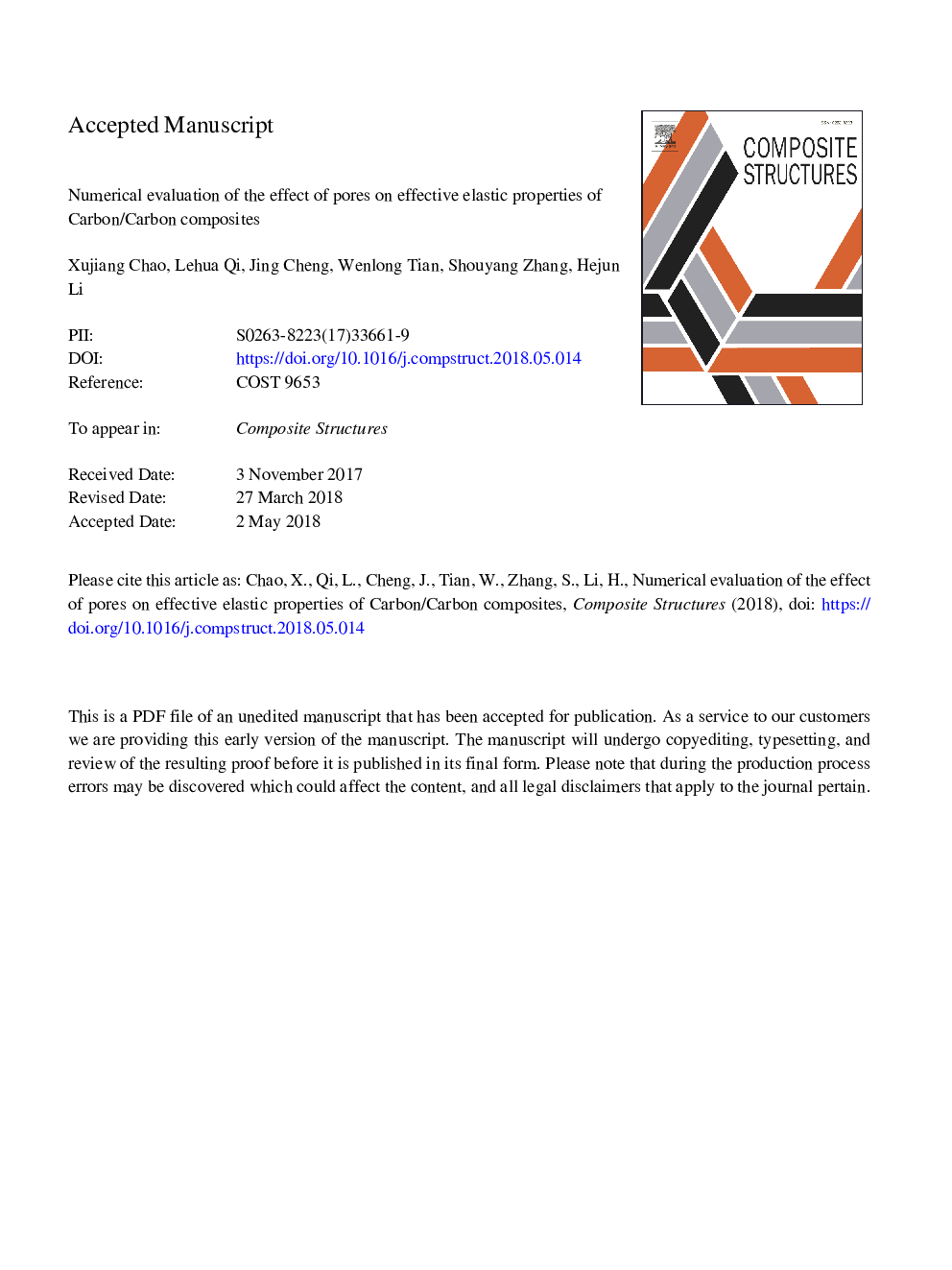| Article ID | Journal | Published Year | Pages | File Type |
|---|---|---|---|---|
| 6703341 | Composite Structures | 2018 | 43 Pages |
Abstract
Combining with the modified random sequential adsorption algorithms and the microstructure information obtained from substantial PLM images of carbon/carbon (C/C) composites, a strategy is presented for generating the representative volume elements (RVEs) with complex microstructures such as fiber and spatially randomly distributed pores. The formulation of the Minimum Distance Search Method for efficiently checking the intersection of the fibers-pores or pores-pores in the RVEs is discussed. Within the frameworks of elasticity, the effect of volume fraction and aspect ratio of pore inclusions on the effective elastic properties of C/C composites are investigated using the finite element method (FEM) and numerical homogenization method. The validation is performed by comparing the predicted effective elastic modulus against those measured by uniaxial tensile tests. FEM results show that with increase of porosity, the effective elastic properties of C/C composites decreased rapidly. Compared with the transverse elastic of unidirectional C/C composites, the downward trend of elastic properties of the felt C/C composites is more inclined. Furthermore, under a certain porosity, with increase of the aspect ratio, the effective elastic properties of C/C composites increase.
Related Topics
Physical Sciences and Engineering
Engineering
Civil and Structural Engineering
Authors
Xujiang Chao, Lehua Qi, Jing Cheng, Wenlong Tian, Shouyang Zhang, Hejun Li,
